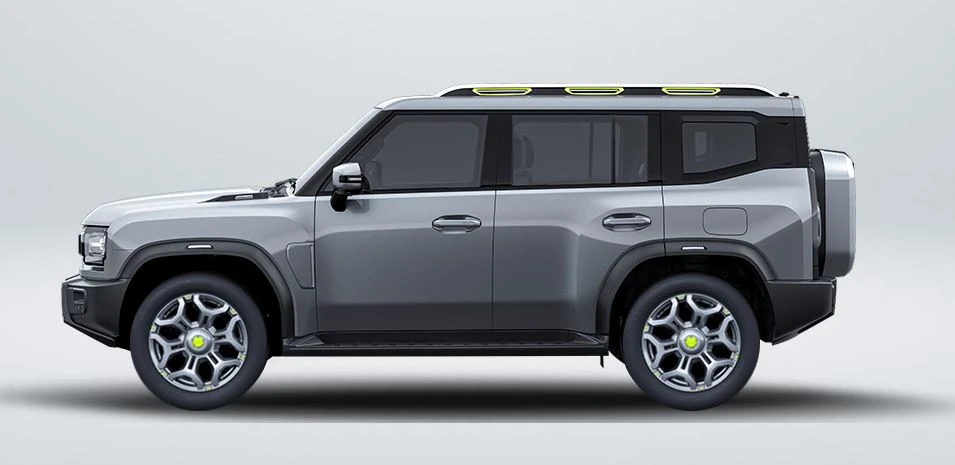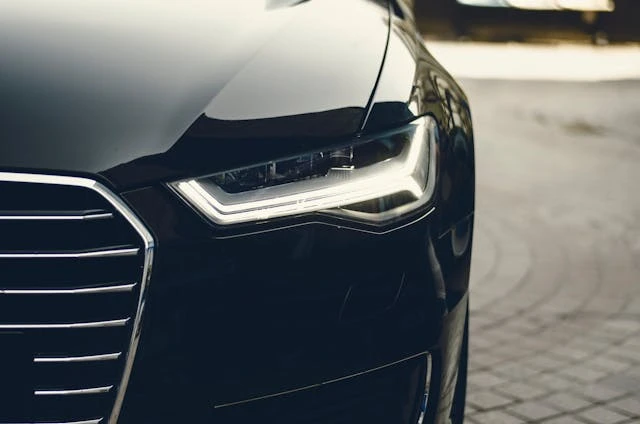Buy A New Car
Is That Second-Hand Car Reliable?
So you’re in the market for a new vehicle, but don’t want to dish out top dollar. You turn to the second-hand market, wondering if you can score yourself a bargain. What should you be on the lookout for? Is there any way to determine how reliable a used car is?
Due Diligence
The best place to start is with research. Look into which makes and models are known for their reliability. Consider your social circle, who drives what, and if they’ve encountered any problems. Jump on message boards and look for opinions from owners. Read motoring reviews, which should offer insights into common issues and the overall satisfaction of other owners.
Once you’re out and about visiting car yards or private sellers, begin to compare the options you narrow down to. When it comes to reliability, the first thing you want to do is check the history of the cars you are looking at, so turn to vehicle history reports, service records, and check the relevant register in your state or territory to ensure the car hasn’t been written off in the past.
Inspecting the Vehicle
Begin with a walk-around to look for signs of damage, rust, or mismatched paint that might indicate previous repairs. Check the condition of the tyres to ensure they have sufficient tread depth and that there are no signs of uneven wear, which could signal alignment issues or suspension problems. While you’re at it, make sure you also inspect the lights, windows, and mirrors to ensure they are functional and free from cracks or any other damage.
Lift the bonnet and examine the engine bay for any signs of leaks, corrosion, or worn belts and hoses. The oil, coolant, and transmission fluid should be at appropriate levels and appear clean. Dirty or low fluids should prove cause for concern, as it may signal a neglectful owner.

There is only so much that an untrained individual can look for when inspecting under the bonnet, so ask a trusted mechanic or third-party inspection service to perform a more detailed inspection. These individuals may be able to identify potential issues that might not be apparent during your inspection and test drive.
Inside the vehicle, make sure that key features like air conditioning, heating, infotainment system, power windows and so forth are all in working order. If you fail to pick up any problems at this stage, it could lead to complications later on, and a big bill.
Driving the Vehicle
Arguably the most telling aspect of evaluating a second-hand car is the test drive. Pay attention to how the car starts, accelerates, and handles. The engine should start easily and run smoothly without unusual noises. Check the brakes for responsiveness and listen for any squeaking or grinding sounds, which can indicate worn brake pads or rotors. Test the steering for smoothness and ensure there are no vibrations or pulling to one side.
Is it the Right Car for You?
While you can never be certain that you’re not acquiring a lemon, you can form some idea as to the likely reliability of a second-hand vehicle by completing diligent research, inspecting the vehicle, and driving the car as part of a test drive.
It’s wise to follow these steps to ensure that you make an informed decision, reducing the risk of purchasing a used car that turns out to be a lemon.
Introducing The Jetour

I’ve always loved the exterior of the Land Rover Defender, whether old or new. Its boxy shape and rugged appearance are perfectly crafted for off-roading. The short front and rear overhangs are just perfect for clearing steep entry and exit points on a slope. Of course, there is also the legendary Defender’s 4WD powertrain that is the rock of what makes this an immensely capable 4×4 off-road machine. However, there is another vehicle coming to Australia with that same chunky, boxy shape and talented off-road skills. This new machine comes to us from China and will be available to buy down under in 2025. Let’s take a closer look, and by this, I mean you’ll need to look really closely to make sure it is a Jetour and not a Defender. A big hint is to read the brand name that runs across the front of the bonnet!
It is said that we all have a double of ourselves somewhere in the world (I know I do). This double basically looks like us. Land Rover Defender’s double or doppelganger (German for “double walker”) would surely have to be the new Jetour. The Jetour is a vehicle that was designed to be a luxury crossover brand in 2018 and is the creation born from the Chery Holding Group, often known simply as Chery. Chery is an automotive group currently based in the eastern Chinese city of Wuhu. Born in 1997, Chery has grown and developed in a diversified manner with automobiles as its primary business. Over time, Chery have created automobiles, gotten involved in automotive parts, finance, property and modern services. Chery now has over 300 member-enterprises; these include Chery Automobile, Chery Commercial Vehicle, Chery Jaguar Land Rover, Chery Finance and Chery Technology.
The Jetour T2 large off-roader does look really good in the metal, with its square boxy body shape, bold wheel arches and big rubber, high ground clearance, a swinging tailgate with a spare tyre on the outside, big solid bumpers, and an interior that won’t mind getting dirty from an adventure Outback.
Similar again to how Land Rover has designed its latest Defender, the 2024 Jetour T2 is built around a monocoque body, which is a design that offers loads of structural rigidity and stiffness for tackling the rigours of serious off-roading. The monocoque body is the perfect solid foundation for the Jetour T2 4×4’s advanced all-independent chassis. An independent suspension means that all four wheels can drop and ride over large obstacles individually and independently of what the other three wheels are doing at the same time. This enhances the ability to obtain maximum traction at each wheel, perfect for progressing through tricky and slippery terrain.
The new Jetour will come with the option of either a 1.5-litre or a 2.0-litre turbo petrol engine to power the 4×4, and the engine’s power is sent through a seven-speed dual-clutch automatic transmission for ensuring optimum engine torque is harnessed at all times. Having a ground clearance rated at 220 mm, and with the engine’s drive sent to all four wheels via the full-time 4×4 system, this is an exciting new off-road SUV for the Adventurer needing a new vehicle to get them to a remote location.
We’re looking forward to it, and be sure that we’ll review it fully when it makes it over here.
What’s The Most Reliable Second-Hand Car Out There?

Some of us may have a family with teenagers; some of us may have kids in their early twenties and at university; some of us will be single and not on a rich person’s wage. There will be many of us who just can’t justify paying loads of money on a brand-new car, at least not yet. Fair enough, too, as some cars are expensive when bought new (although here at Private Fleet, we will do everything we can to help you find the best deal).
For most of us, a good second-hand car is the right way to go to ensure we can do life, get to and from work, hang out with friends, and go on that roadie around Australia that we’ve always wanted to. For 2023, by the end of the year, almost 2.1 million used cars were sold in Australia. These stats were from the Automotive Insights Report (AIR) published by the Australian Automotive Dealer Association (AADA) and AutoGrab.
Thanks to two UK businesses, Carwow and Warrantywise, here are some really good second-hand cars that should be on our radar if we are looking to buy one that has proven reliability. Carwow and Warrantywise teamed up to reveal the most reliable cars in the UK based on warranty and repair data. All of the vehicles in the analysis were outside their manufacturer warranty. In order to be included in this analysis, Warrantywise had to have at least 100 examples of a specific car on its books.
The analysis revealed that the Honda Jazz is the most reliable second-hand car you can buy, boasting an overall reliability rating of 93.7%. The next most reliable model is the Mazda 2, while the Toyota Auris (Corolla) comes in third in the rankings. Though this survey is UK-based, most of the cars that dominate the top 15 can be bought over here. And they’re probably just as good here as they are there.
Note that in analyses done in previous years, the Lexus RX was the most reliable car, but for 2022 (the year of this particular analysis), there were not enough (couldn’t find 100 of them) Lexus RXs to make the Warrantywise’s books, so let’s just chuck this Lexus into the top four most reliable second-hand cars you can buy and be done with it!
Here is a list of the 15 most reliable second-hand cars you can buy in the UK. The top four have a bit more info about them (albeit with the currency in British pounds, given that that’s where the research was done). Most of the cars in the reliability analysis can be easily looked up in our Private Fleet Car Reviews page if you want to know more about them. The Toyota Aygo and the Peugeot 107 will require some more searching, as they were are not really sold here in Australia.
1. Honda Jazz (2007–2020), 93.7% reliability score.
The top spot goes to the trusty Honda Jazz. This is a surprisingly practical small car that is also very fuel efficient. It has put in a stunning performance for reliability, with the average cost of repair being low (£424.31). The most common fault was with the central locking mechanism. The most expensive repair happened to be with the air conditioning system (£973.66). The average age of the Jazz cars in this analysis was 8.3 years old. You won’t go far wrong buying a second-hand Jazz.
2. Mazda 2 (200–-present), 89.9% reliability score.
The average age of the Mazda 2 cars was 8.4 years old, suggesting that the Mazda 2 remains reliable even as it ages. It also suggests that you will get a very good run for your money if you get a new version as well. The average repair bills were impressively low (£319.22), and the most common fault was to do with the suspension. The most expensive repair was with the electrical power steering pump (£2,422.31). The Mazda 2 is a comfortable small car with plenty of style. You can buy with confidence here.
3. Toyota Auris/Corolla (2013–2018), reliability score 89.7%.
Spacious and comfortable, the zippy Toyota Corolla/Auris is a car that is hard to fault. With an average age of 8.3 years old in this survey, these are great small/medium cars. The average repair bill was £767.84. The Gearbox/Transmission seemed to be the most common fault with the car and was also the most expensive repair (£1841.60). Based on Warrantywise’s experience, you’re unlikely to go far wrong with the Toyota Corolla. Sometimes, because Toyotas are so reliable, the first few owners may have skimped on maintenance and are happy to pass the bills onto the new owners. Make sure the car you’re looking has a service record and has a smooth-operating gearbox.
4. Mazda MX-5 (2005–2015), reliability score 86.5%.
Here is the most fun and reliable second-hand car you can buy! The Mazda MX-5 averaged 8.4 years old in the reliability analysis, with an average repair bill being a remarkably low £341.78. The most common fault was with the suspension, and the most expensive repair was with the air conditioning (£586.94), also remarkably low.
5. Toyota Aygo (2005–2022)
- Reliability score 85.5%
- Average age 7.5 years
- Average repair £375.66
- Most common fault was with the alternator.
- Most expensive repair was the clutch (£1,339.36).
6. Kia Ceed (2012–present)
- Reliability score 85.0%
- Average age 7.9 years
- Average repair £485.36
- Most common fault was wheel bearings.
- Most expensive repair was with the gearbox (£1,914.00).
7. Kia Rio (2011–present)
- Reliability score 84.9%
- Average age 8.3 years
- Average repair £528.23
- Most common fault was the gearbox.
- Most expensive repair was the turbocharger (£1,655.39).
8. Suzuki Alto (2008–2013)
- Reliability score 83.9%
- Average age 6.8 years
- Average repair £328.92
- Most common fault was the electrical system.
- Most expensive repair was with the engine cambelt (£733.70).
9.Hyundai i20 (2008–2020)
- Reliability score 82.5%
- Average age 7.6 years
- Average repair £520.25
- Most common fault was with the electrical system.
- Most expensive repair was with the suspension (£2,361.36).
10. Peugeot 107 (2005–2014)
- Reliability score 81.6%
- Average age 7.9 years
- Average repair £434.89
- Most common fault was the heater fan motor.
- Most expensive repair was the clutch (£1,128.44).
11. Honda Civic (2011–2022)
- Reliability score 80.7%
- Average age 7.2 years
- Average repair £630.86
- Most common fault was with the air conditioning.
- Most expensive repair was with the fuel system injectors (£3,055.73).
12. Renault Kangoo (2007–2021)
- Reliability score 80.1%
- Average age 7.3 years
- Average repair £576.37
- Most common fault was with the electrical system wiring looms.
- Most expensive repair was the gearbox (£1,173.00).
13. Toyota Yaris (2011–2020)
- Reliability score 79.8%
- Average age 8.2 years
- Average repair £795.89
- Most common fault was with the electrical system.
- Most expensive repair gearbox (£3,106.92).
14. Toyota RAV 4 (2013–2018)
- Reliability score 79.2%
- Average age 8.0 years
- Average payout £846.83
- Most common fault was the fuel system injectors.
- Most expensive repair was engine related (£2,055.74).
15. Fiat 500L (2012–2020)
- Reliability score 78.7%
- Average age 6.0 years
- Average repair £551.58
- Most common fault was the clutch.
- Most expensive repair was the clutch (£1,880.21).
Of course, it’s not compulsory to get a second-hand car, and the safety net of the warranty period is certainly attractive with new cars. Have a wee chat to one of our team and we might just be able to find you a brand new car for a price that’s not that much more than what you’d pay for a second-hand vehicle.
How to Avoid Car Buyer’s Remorse
Buying a car is a significant investment, both financially and emotionally. It’s a decision that can impact your daily life for years to come. However, it’s not uncommon for buyers to experience remorse after making such a substantial purchase. To avoid this feeling of regret, there are several steps you can take to ensure you make the right choice.
Firstly, do your research. Before stepping foot onto a car lot or browsing online listings, take the time to research different makes and models. Consider your needs, preferences, and budget. Look into factors such as fuel efficiency, reliability, safety ratings, and resale value. By arming yourself with knowledge, you’ll be better equipped to make an informed decision.
Next, set a realistic budget and stick to it. Determine how much you can afford to spend on a car, taking into account not only the purchase price but also ongoing expenses such as insurance, maintenance, and fuel. Avoid the temptation to overspend or stretch your budget too thin, as this can lead to financial stress down the line.
When it comes to financing, explore all your options. Shop around for the best interest rates and loan terms. Consider whether buying new or used is the right choice for you. Keep in mind that a lower sticker price doesn’t necessarily mean a better deal in the long run if the vehicle has a higher cost of ownership due to maintenance or depreciation.

Before making a decision, take the time to test drive the vehicle. Pay attention to how it handles, accelerates, and brakes. Test out the features and amenities to ensure they meet your expectations. Don’t be afraid to ask questions or request additional information from the seller or dealership.
If buying used, have the car inspected by a trusted mechanic. A pre-purchase inspection can uncover any hidden issues or red flags that may not be apparent to the untrained eye. It’s a small investment that can potentially save you from costly repairs later on.
Consider the long-term implications of your purchase. Think about how the car will fit into your lifestyle now and in the future. Will it accommodate your growing family or changing needs? Is it a vehicle you can see yourself driving for several years? By thinking ahead, you can avoid the need to upgrade or replace your car sooner than anticipated.
Lastly, trust your instincts. If something doesn’t feel right or if you’re feeling pressured into making a decision, take a step back and reassess. Don’t let emotions cloud your judgment or sway you into a purchase you may later regret.
In conclusion, avoiding car buyer’s remorse requires careful planning, research, and consideration of your needs and circumstances. By following these tips, you can make a confident and informed decision that you’ll be happy within the long run.